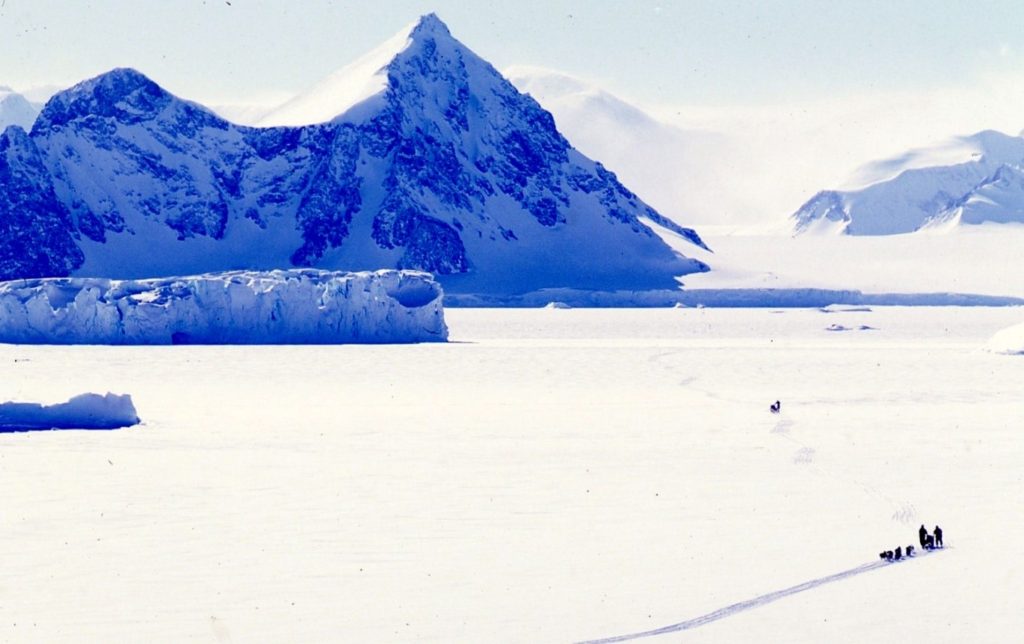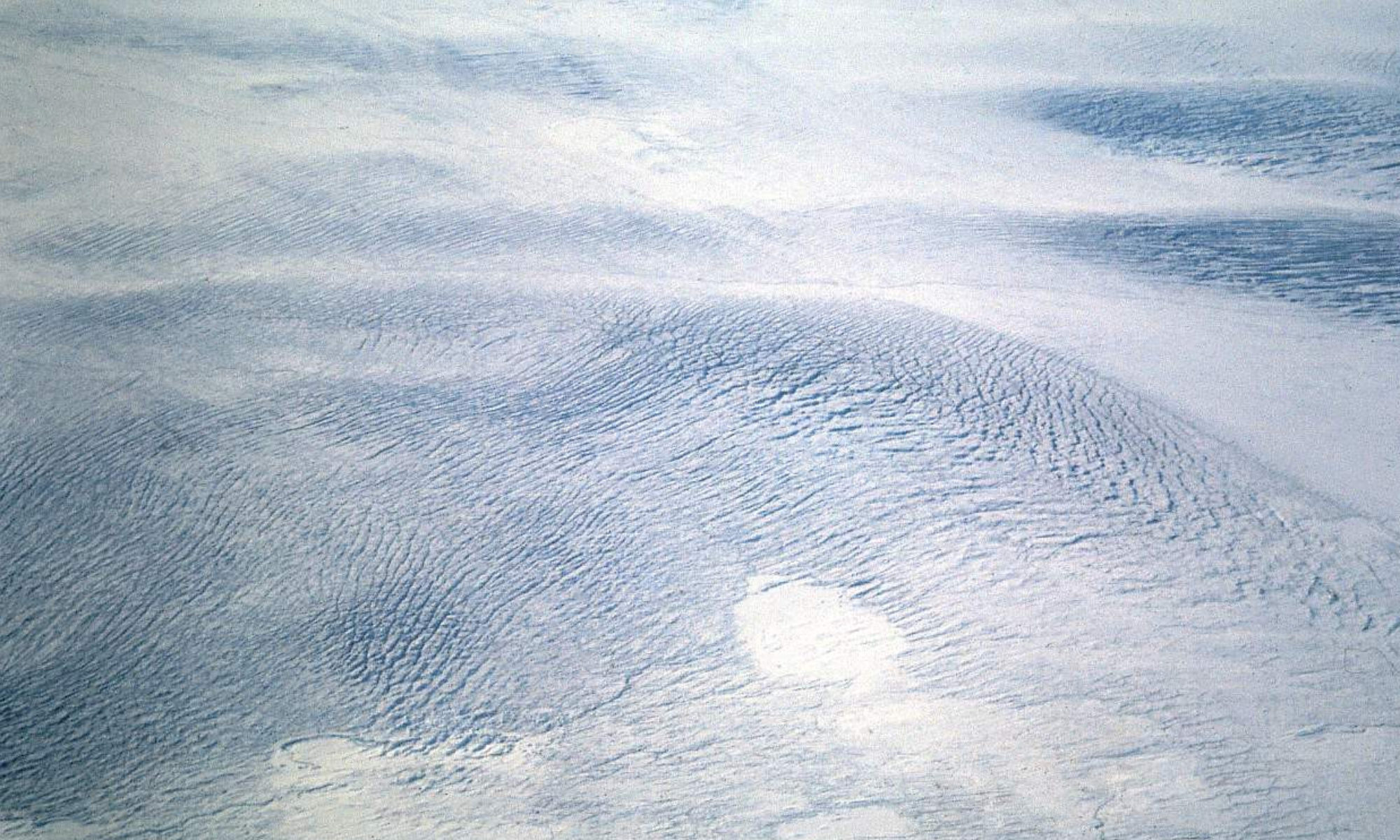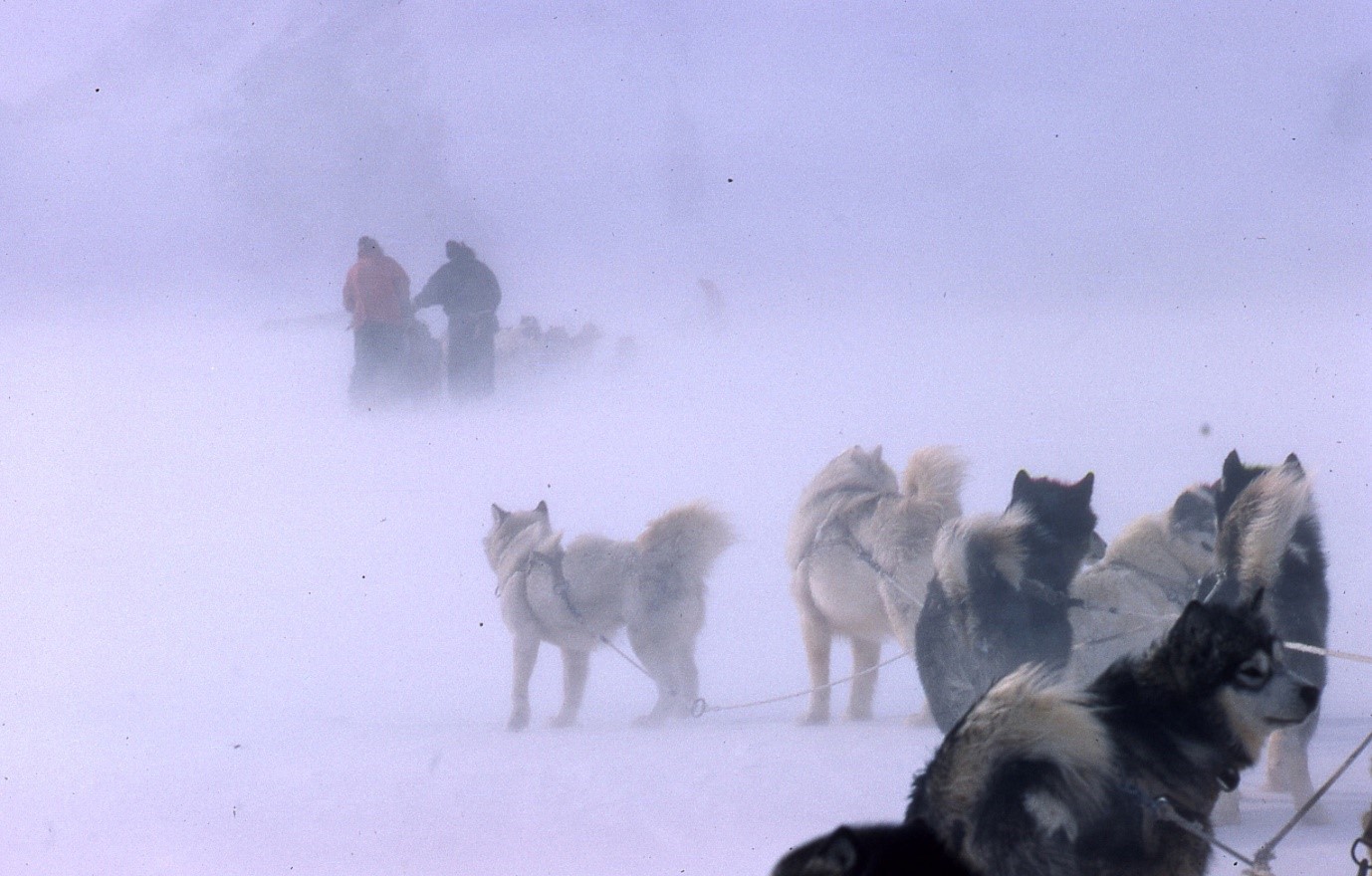The Great Puffballs Rescue/Jolly – Ian Sykes
Stonington had a couple of bad years for accidents and incidents in 1965 and 1966.*** As a result, our Base Commander, Ali McArthur, very rightly, was scrupulous on safety. Sledge parties were reluctant to travel in bad weather and long ‘lie-ups’ were the order of the day.

On my first sledging journey we had terrible, mild weather. We had been landed on Blaiklock Island by the ‘Biscoe’ and had a 16-day lie up and two 11-day lie-ups on the Heim Glacier. As a new-boy, this I assumed to be quite normal.
The poor sea-ice made it impossible to get back to Stonington in time for Midwinter. It rained heavily on Midwinter’s day, which we spent rather miserably, camped on the beach on Blaiklock Island. In fact my sledge broke through the ice on the way home to Stonington a couple of weeks later.
Continuing from Stonington 1968
*** – The first was when a survey party was stranded on Detaille Island after the sea-ice blew out (see here). Fortunately, they suffered no harm, but in the following year two men lost their lives during a storm in what is informally known as ‘the bypass’, a tributary valley on the northern side of the upper reaches of the Northeast Glacier (see 1966 – Sledging Fatality above – ).
My only real concern was, as I remember, that we ran out of fags and resorted to bog roll and tea smokes.
Things improved dramatically for the summer sledging trips the following summer but the crash of the Pilatus Porter Aircraft, while taking off on the polar plateau, and resultant stranding in Fossil Bluff of five very pissed off FIDS over the winter, caused a great deal of consternation. There was plenty of food at the Bluff but the generator wouldn’t work and there were few amenities.
This then was the background to an early start from Stonington to relieve Fossil Bluff as soon as possible in the spring. A strong sledging party left base in good weather and what seemed like stable sea-ice. The team was Alistair MacArthur, Shawn Norman, Lew Willy and Ian Flavell-Smith. The pressure ridges were fairly well filled in with snow and they made good time across Neny Fjord, round Red Rock Ridge and the long crossing to The Terra Firma Islands (“Terra Firma”). The next stage was another long sea ice crossing to the relative safety of the Puffball Islands (“Puffballs”). Unfortunately at this crossing things began to go horribly wrong when there was a change in the weather and they were forced to camp on open sea-ice. They could feel movement on the ice and when they finally got moving again could see water sky close to them and a lot of cracks had opened in the ice. They were unable to cross one lead and turned back only to discover they were cut off by other leads behind them.
Ian Flavell Smith’s radio call, when we received it at Stonington, was very worrying. Ian was very ‘matter of fact’ about their situation and relatively confident that they were okay but knowing that their position on the ice had moved had everybody alarmed. The weather was windy and overcast and not the best for sledging.
In a great rush it was decided that three of us should try to get down there to help with an inflatable boat. With all hands assisting, we made the sledge loads as light as we could and within a couple of hours headed off down Neny Fjord. The three of us were Derek Postlethwaite with the Ladies, Ken Doyle with the Giants and me with the Vikings. On my sledge I carried an inflatable Zodiac and a small Seagull outboard motor; the idea being that in a worst case scenario we could ferry the sledges across open leads.
We rounded Red Rock Ridge with open water clearly visible and camped on some rocks on its south side. The following day we camped near Refuge Island and then in ghastly conditions headed for Terra Firma , which we failed to reach. We had crossed a number of small leads and it was blowing and snowing and there were a lot of pressure ridges. We camped on a large pan that seemed stable enough although we could feel movement in the pack-ice. It had been a very exciting few days and I can’t remember being particularly worried although none of us relished the idea of having to use the boat. The following day we reached Terra Firma on a compass bearing, very relieved.
We left Terra Firma in horrible conditions on a compass bearing but by mid morning things improved dramatically. The weather brightened and the temperature dropped and we set out on the long crossing towards the Puffballs. It was the first time that I saw some really strange optical phenomena. There were huge mirages of pools ahead and the mountains on Alexander Island seemed to stack on top of each other like Christmas trees. The driver of the sledge ahead kept stretching up as if he had an elongated neck. The leads and cracks were smoking in the low temperature as they began to ice over.
We reached the Puffballs in glorious weather almost exactly at the same time as Ali MacArthur and his party and a small group of curious Emperor Penguins. It was a grand meeting although the rescue part turned out to be a bit of a damp squib – we never did get the boat into the water!
There was still some water sky about and nobody was certain what lay ahead or how difficult it would be to get onto the George VI Sound Ice Front. We reluctantly decided to take the safest course: to head back to Stonington the way we came then wait a short while longer for the sea-ice to improve, before relieving the FIDS at Fossil Bluff. The journey back on superb sea-ice was uneventful. In a worst case scenario we had planned to cross Red Rock Ridge via Safety Col but in the event we got round the headland okay and had a glorious run back down Neny Fjord to Stonington Island.

The following day there was a tremendous blow and the entire sea-ice blew out – Neny Fjord and the lot! It could have been a disaster. In retrospect I was probably in the best position as I had the boat on my sledge!
It had turned out to be a grand adventure and we did finally relieve the FIDs at Fossil Bluff a few weeks later. I think that it was the start of one of the best sledging years ever.
Ian “Spike” Sykes – GA, Stonington 1968 and 1969

